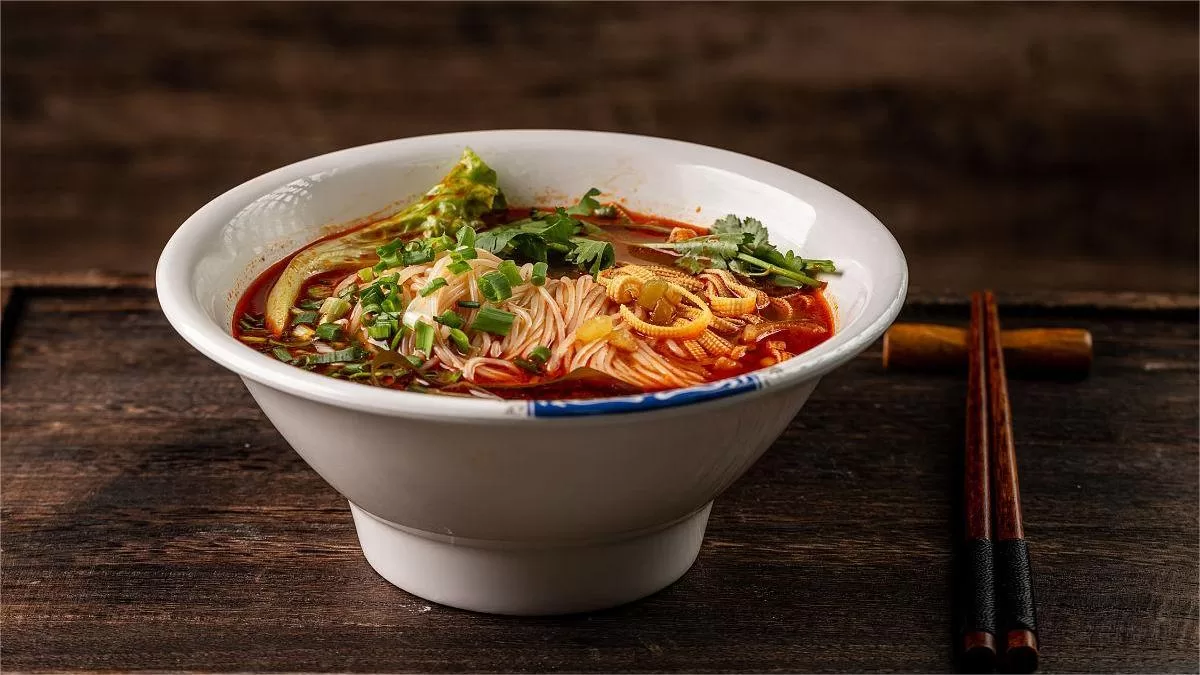Chongqing noodles, known as Chongqing Xiaomian (重庆小面) in Chinese, stand out as a quintessential staple in the culinary landscape of Chongqing, China. Originating from the heart of old Chongqing, these noodles are a distinctive Han Chinese snack with a penchant for spicy and numbing flavors, making them a culinary delight for locals and gaining nationwide recognition in recent years.
Belonging to the category of soup noodles, Chongqing noodles are most famous for their “mala” (numbing and spicy) taste. They represent the simplest form of Chongqing’s noodle cuisine, featuring fresh wheat flour noodles known locally as “shuimian” or “shuiyezi.”
In a narrow sense, “Xiaomian” specifically refers to plain noodles seasoned with a mixture of scallions, garlic, vinegar, and spicy chili oil. However, within the linguistic system of old Chongqing, even noodles adorned with lavish toppings such as beef, offal, and spare ribs are colloquially referred to as Xiaomian, examples being beef noodles, fatty intestine noodles, and pea and pork sauce noodles. Nevertheless, if you were to visit a Xiaomian restaurant without specifying, it is assumed you are referring to the standard spicy plain noodles.
The evaluation of Chongqing noodles by locals revolves mainly around the condiments, which are considered the soul of the dish. The Chongqing noodles family boasts a rich variety, allowing for personalized customization of flavors. Customers can request specific preferences such as “ganxiao” (dry-mixed noodles), “tihuang” (firmer noodles), “jiaqing” (extra vegetables), “chongla” (extra spicy with more chili oil), and more. Moreover, patrons can choose noodles of varying thickness and shapes, such as “ximian” (thin noodles), “jiuye” (chive noodles), and “kuaimian” (wide noodles), with most establishments offering these three options.
Chongqing noodles hold a special place in the hearts of Chongqing locals and are widely accepted as the go-to noodle dish for residents of the southern city. The passion for Chongqing noodles among locals is comparable to their love for hot pot, if not more intimate. It’s not just a culinary preference; it’s a dependence. Early in the morning, street-side noodle stalls come alive, and despite some places having simple or even makeshift setups, they attract crowds. It’s a common sight to witness ladies, regardless of their refined images, indulging in the aromatic bowls. Even well-dressed gentlemen, momentarily setting aside their briefcases, can be seen devouring a bowl of Chongqing noodles with gusto. Before returning home, Chongqing residents, if unable to indulge in a hot pot, often opt for a comforting bowl of Xiaomian to satiate their cravings.
Chongqing noodles encapsulate the essence of the city’s culinary culture, embodying a rich history and a deep connection with its people. They have become more than just a dish; they are a cultural symbol and a beloved part of the daily lives of Chongqing residents.


